“The Nambu light machine guns…may well have killed more of us than all of the other Jap guns put together.” — Lt. Colonel John George, 132nd Infantry Regiment, Guadalcanal
During World War II, certain infantry weapons gained iconic status. Sometimes it was based in the look of the weapon, like the German MP40 submachine gun. For others, it was their reputation for accuracy and durability, like the U.S. M1 Garand rifle. Others were renowned for a unique capability, like the high cyclic rate of the MG 42.
But there were some weapons that served without much fanfare, efficiently going about their deadly work but receiving little attention during, and after, the war. The latter category accurately describes the light machine guns (LMGs) of the Japanese Empire.
After World War I, the Japanese coupled their own limited combat experience in the conflict with information gleaned from studying the weapons and tactics used in the trenches of France. Inspired by the international move to create easily portable infantry firepower, the Japanese moved to design and build their own light machine gun. Their first effort was bizarre, unique, and yet somehow effective. The emperor’s men found a way to make it work.
The Type 11 LMG
At first glance, the Type 11 simply looks “odd” — unbalanced and awkward. But it is a very early light machine gun design, and ultimately, Kojiro Nambu’s design was adopted for service in 1922. The Type 11 is slightly reminiscent of some early Hotchkiss LMG types and builds on Nambu’s earlier Type 3 HMG design. It uses long-stroke, gas piston action, firing from an open bolt on full-auto only (with a 500-rpm cyclic rate).
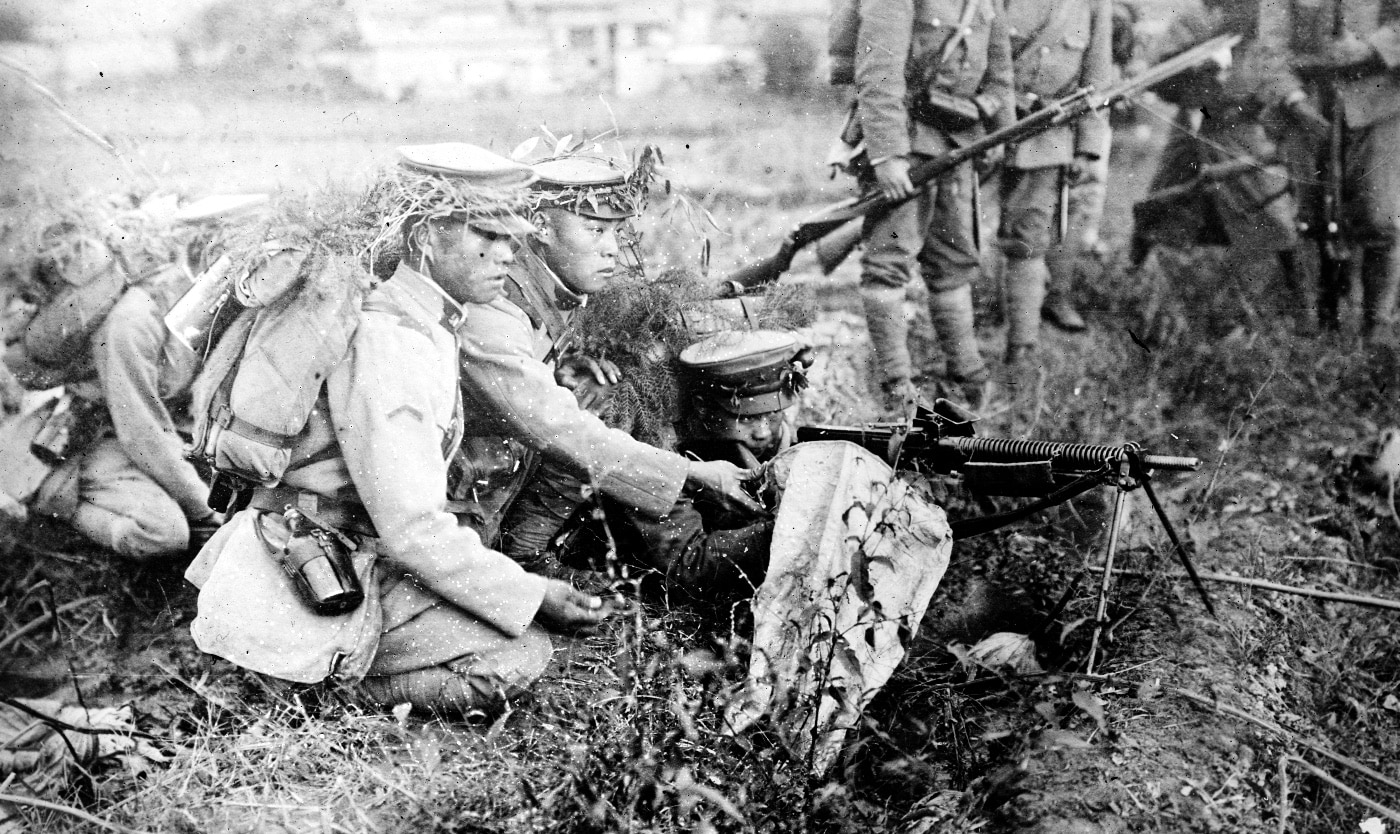
The most unique aspect of the Type 11 is its “hopper” ammunition feed system. This was an attempt to avoid the limitations of magazine feed, and to theoretically provide sustained firepower like a belt-fed MG.
The hopper is loaded by up to six of the Japanese standard five-round stripper clips used in the Type 38 rifle — with the empty clips dropping out of the hopper’s bottom. The system can be reloaded continuously while the Type 11 is firing, but in practice, extended firing would quickly overheat the barrel. Even so, it is an interesting early attempt to offer sustained fire capability in a light machine gun. Unfortunately, the hopper would allow dirt, leaves, and moisture into the mechanism, creating greater potential for jamming. The gunner’s view to the left was almost entirely blocked by the hopper, and the sights are offset far to the right of the receiver.
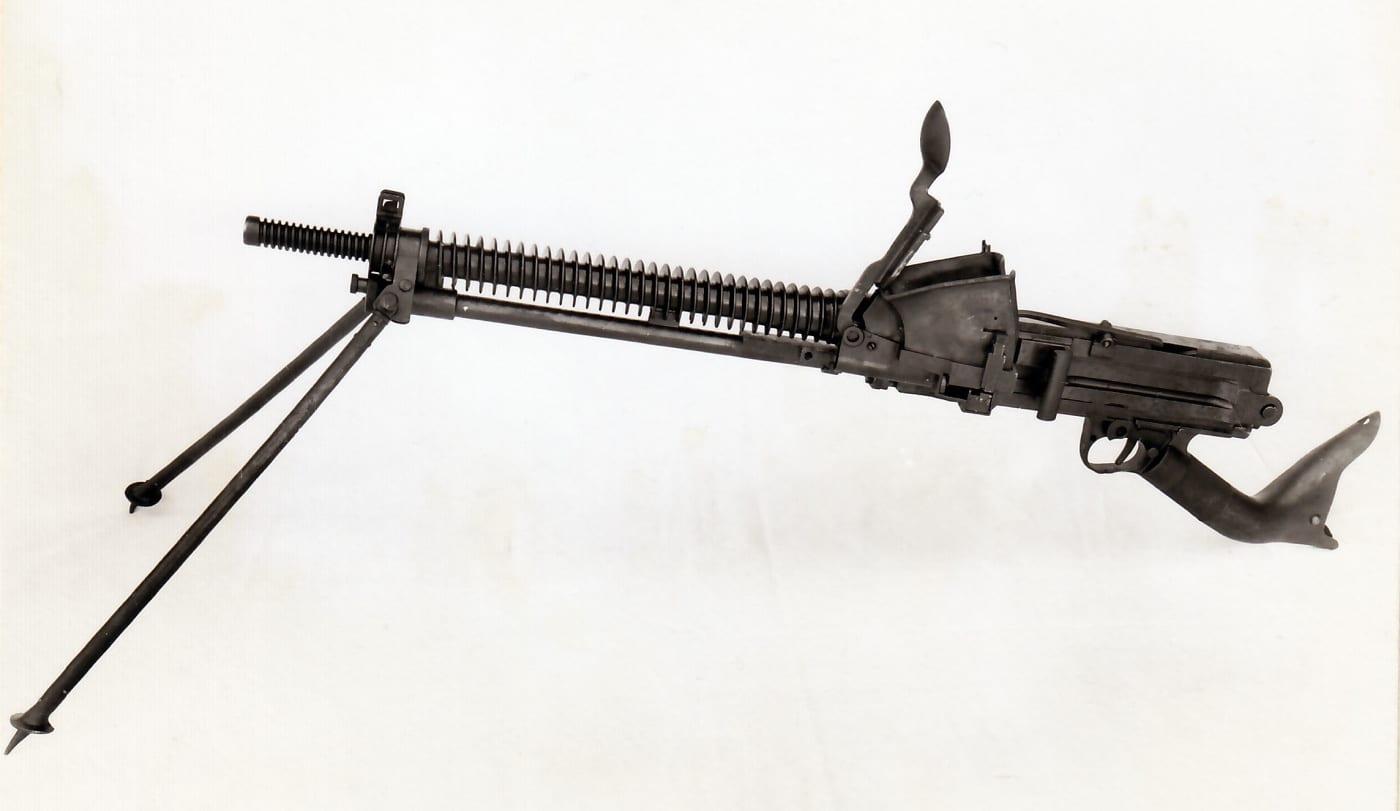
Another quirk of the Type 11 stems from its rather short (17½”) barrel. Using the Japanese standard 6.5x50mm ammunition, the gun produces a pronounced muzzle flash — distracting for the gunner and a giveaway of the weapon’s position. Consequently, the Type 11 was equipped with an adjustable gas pressure regulator to allow the use of multiple ammunition loads.
The Japanese issued a reduced charge round, the 6.5×50mm Arisaka “genso” (marked with a circle “G”). Although the “genso” round offered lower muzzle velocity it created a very effective flash hider, and created less noise, making the Type 11 hard to locate, particularly in jungle fighting.
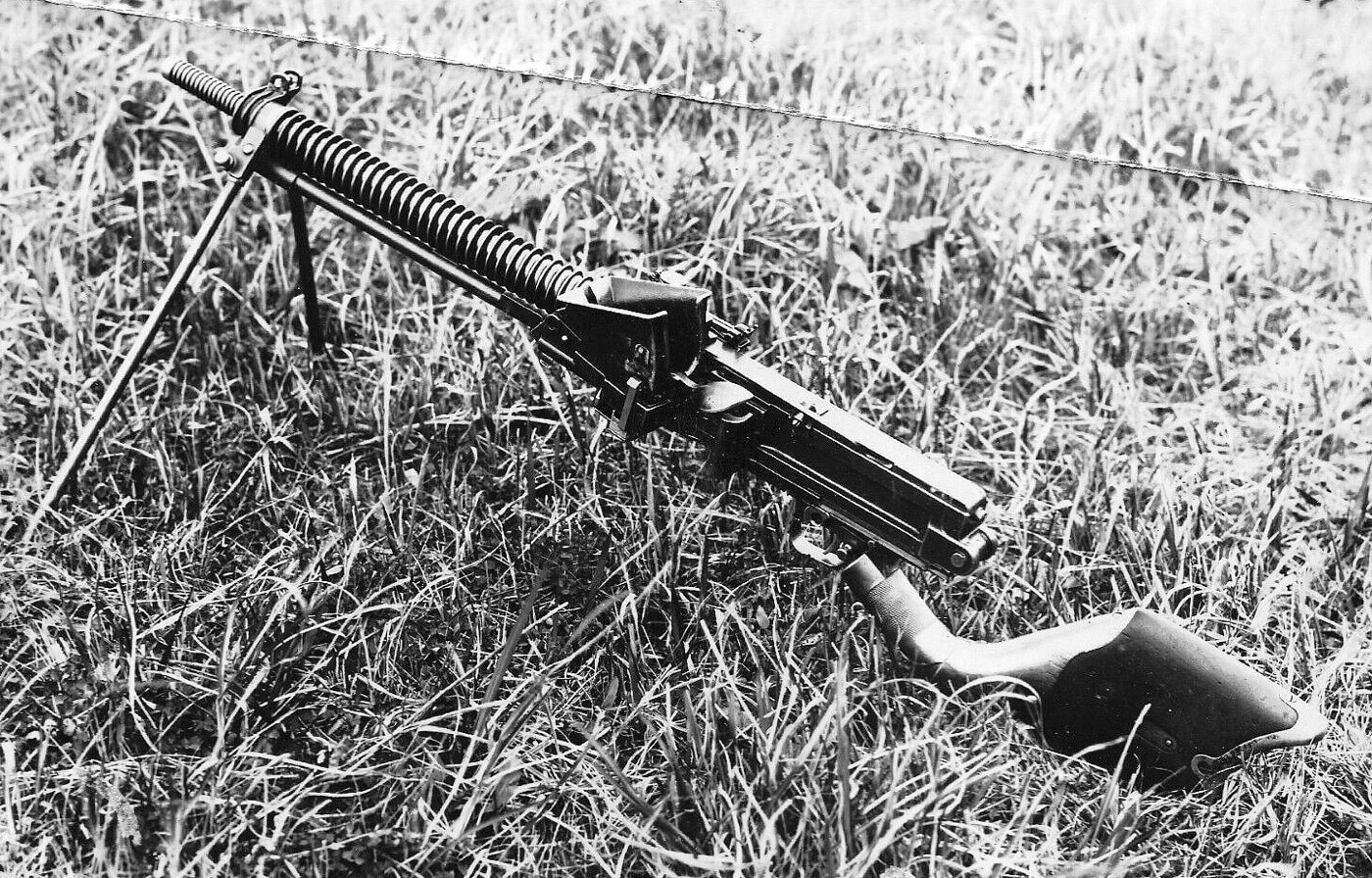
Lt. Colonel John George commented on the Type 11 in his book “Shots fired in Anger” (Small Arms Technical Publishing Company, 1947):
“The M-1922 was almost indistinguishable from its more recently designed kin as far as performance in the jungle was concerned. When it was fired at you, it sounded much the same as the M-1936, and it could group its shorter bursts and hit with nearly the same effect.
The hopper, however, gave an ungainly bulk to the weapon at its balance point, denying it the quality of feel, which was later incorporated so beautifully into the M-1936. Positioned as it was, it blocked the operator’s view and made necessary a very unorthodox and awkward mounting of the sights. They had to be offset to the right for more than an inch to avoid the occlusion of the normal or left side line of sight. This, in turn, caused a need for a radically offset buttstock to permit the shooter to get his shooting right eye more than an inch to the right of the bore line.”
New Breed: Type 96 and Type 99
“The key weapons in any Japanese plan of jungle defense were invariably automatics — light and heavy machine guns — and the lights always predominated.”
Lt. Colonel John George 132nd Infantry Regiment, Guadalcanal
Early experiences with quirky Type 11 LMG led the Japanese military to develop a replacement. While the Type 11 would remain in production until 1941, a new LMG (chambered in 6.5x50mm), designated the Type 96 (1936).
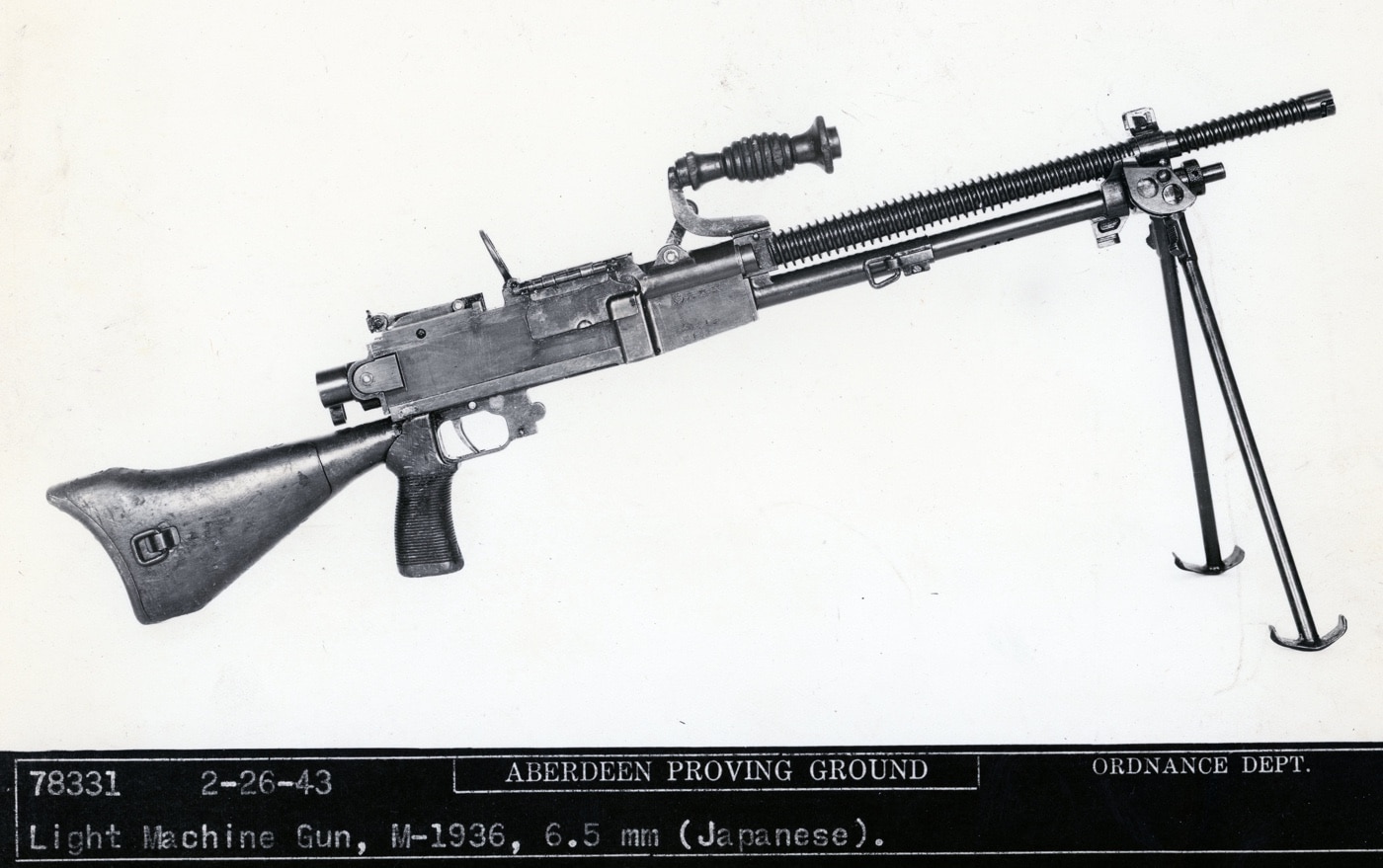
The Type 96 was a completely different design than the Type 11, and the new weapon owed much to the Czech ZB vz. 26, an LMG that was quite popular on the international market. Many examples of the vz. 26 were captured by the Japanese in China, and these were tested at the Imperial Army’s Kokura Arsenal. The result was a very modern-looking weapon, that was often confused with the British Bren Gun (also a variation of vz. 26).
There were multiple opinions about the 6.5mm round and its killing ability, but the Type 96 was considered an excellent light machine gun. More than 40,000 were produced between 1936 and 1943.
The Type 96 uses a top-mounted 30-round magazine and has a cyclic rate of about 600 rpm. While it is only capable of fully automatic fire, experienced gunners could trigger a single round or a very short burst. To extend barrel life, the Type 96 has a simple barrel change system with a disconnecting lever. It was also provided with a rail to mount a well-made 2.5X telescopic sight, and could be equipped with a standard Type 30 rifle bayonet.

Weighing just 20 lbs., the Type 96 was a handy weapon, respected by friend and foe alike. Lt. Colonel George commented: “It was easy to shoot, easy to carry for a weapon of its great firepower, and it was hellish hard on the people being shot at.”
By 1939, the Japanese Army was ready to upgrade its standard rifle round, and adopted the more powerful 7.7×58mm Arisaka rimless cartridge. Happy with the Type 96 design, Kojiro Nambu ported almost all the earlier firearm’s features into the new Type 99. The two guns are very similar in appearance.
The Type 99 is often seen with a large flash hider, which was screwed onto the threaded muzzle. There is also a monopod on the bottom of the Type 99’s buttstock. The barrel change operation on the Type 99 is more complex, as each barrel must be head-spaced to the gun. The weight of the Type 99 went up to 23 lbs., and the overall length went from 42” to 46½”. About 53,000 Type 99 LMGs were made by the end of the war.
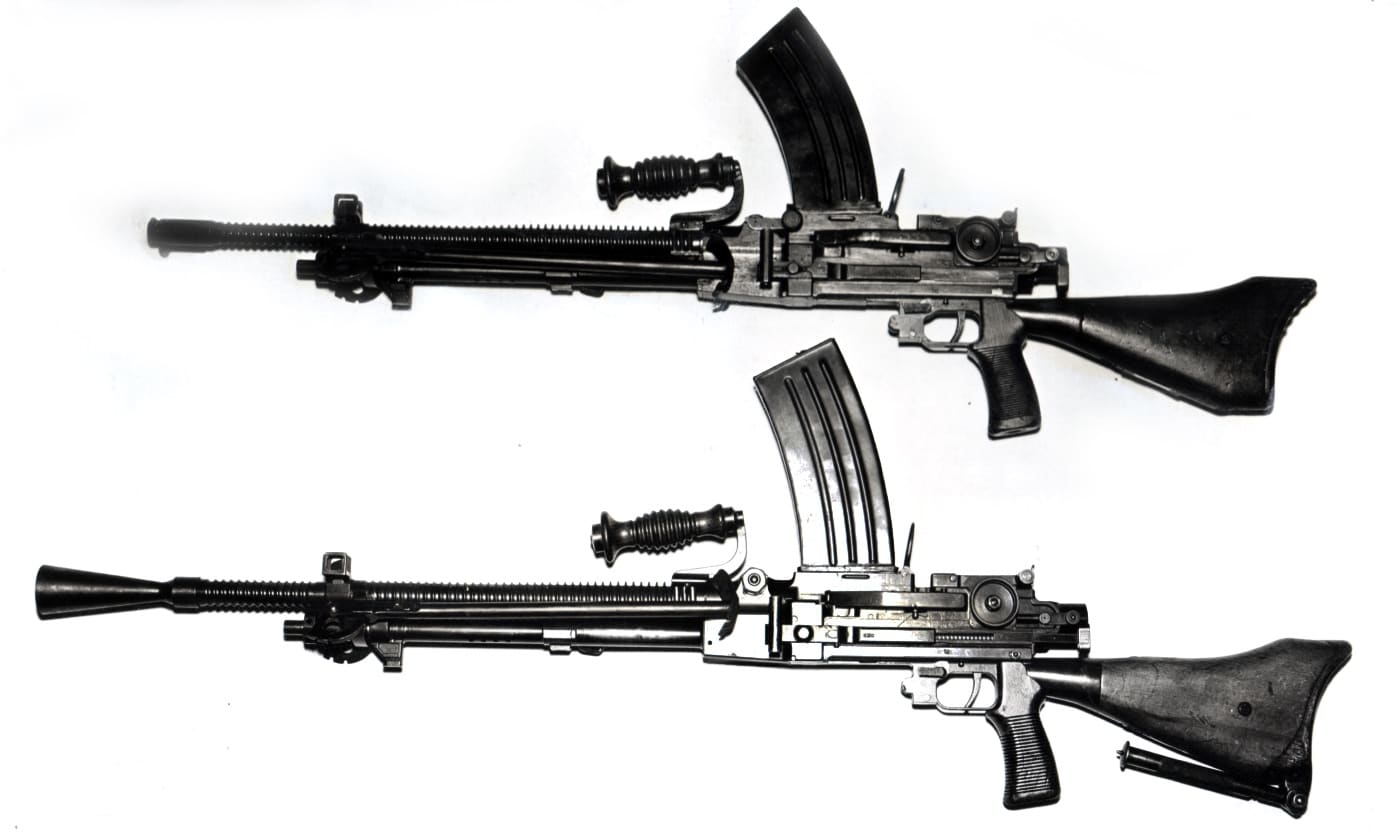
Both the Type 96 and Type 99 could accept the Type 30 bayonet and the 2.5X telescopic sight. Praise, and fear, of the two types were equal. The Type 11, Type 96, and Type 99 served together throughout World War II. Despite the logistical issues created by fielding three separate LMGs, the Nambu Lights were easily among the most deadly infantry weapons of the war.
Views of the Troops
The following are a collection of comments on Japanese machine guns, gleaned from the U.S. Army publication “Battle Experiences Against the Japanese”, published on May 1, 1945:
“The Japanese generally do not depress their machine guns lower than knee level. For this reason, we make our advances by crawling, except during an assault. We have crawled up to within 25 yards of Jap machine guns while they were firing over our heads,” Sgt O.S. Marion, 5th Marines.
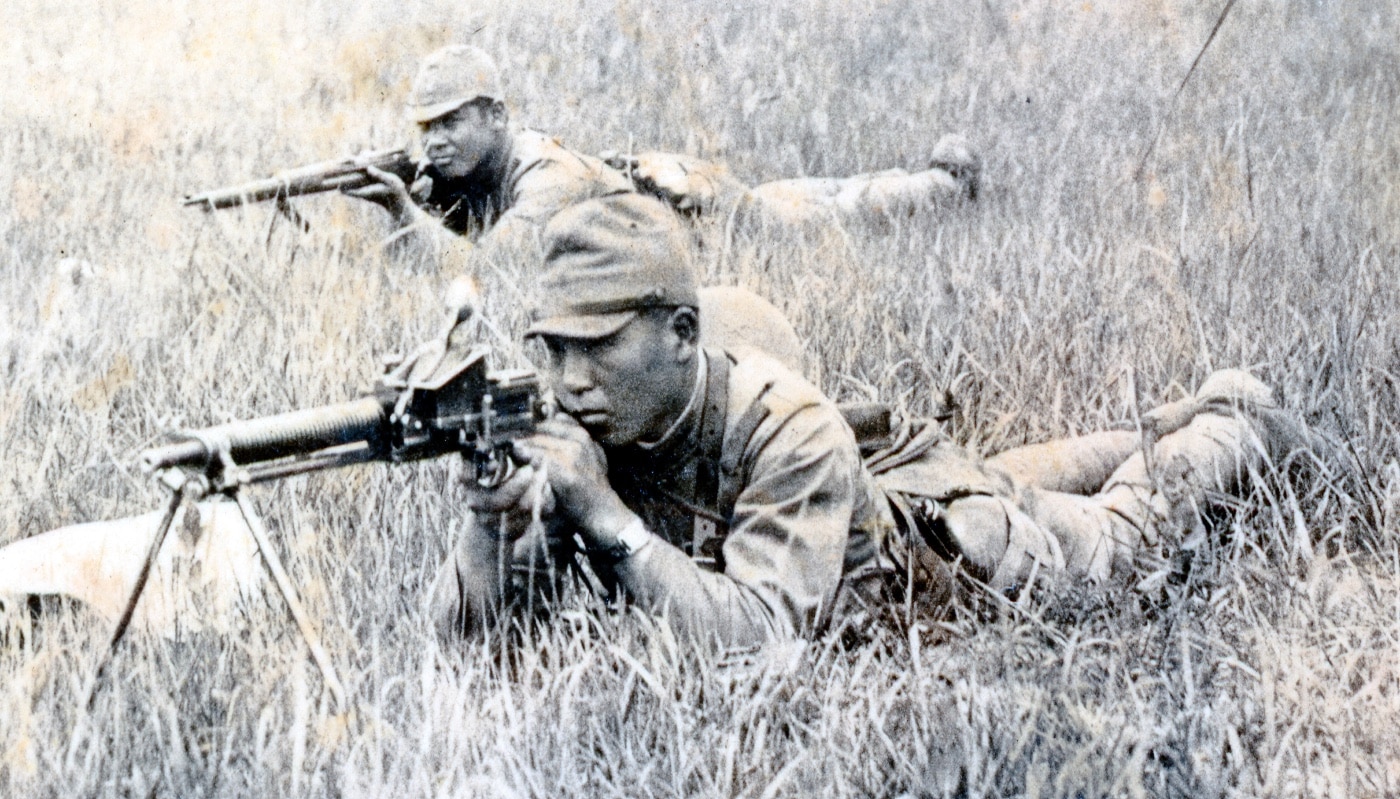
“The Japs never used automatic weapons as such until absolutely necessary. They fired only single shots, making it difficult to locate machine guns or even to know just what was opposing us.” Australian Report, New Guinea.
“The Jap likes to make much use of alternate positions for his medium and light machine guns, even moving them about a great deal during the day.” Report, New Guinea.
“The Jap will hold his fire until the assault is 30 to 50 yards away. Fifty is about the maximum. One fixed line of fire for a machine gun was only 10 yards from the parapet of the Japanese trench.” British report, Burma.
“On Leyte we found one remote-controlled Jap machine gun in a tree. The operators were hidden in foxholes some 75 yards away. The gun, aimed down a road towards our advancing troops, was fired by a rope.” Sgt, Leyte.
“Here’s a good argument for expert crawling and creeping. There are many reports from front line soldiers of the Japs always firing high. In one engagement early in the Southwest Pacific, wounds of our men were reported as being only 10% below the knee and only 20% below the hips. Bullet scars on trees were mostly 2 1/2 feet above the ground.” Report, Pacific.
“I think as a rule only one man in a Japanese machine gun crew knew how to operate the gun. If he could be identified and killed, it was usually an easy matter to get the remainder of the crew, as they would become excited when the gunner was killed.” Cavalryman, Admiralty Islands.
“According to a prisoner, every Jap light machine gun squad has a sniper and an alternate sniper. When a sniper becomes a casualty, another man immediately takes his place. The Japanese regard the sniper as one of the key men.” Report, Pacific.
“Jap machine gun nests were well protected by riflemen in trees and on the ground. “ Australian Report, New Guinea.
“A Japanese machine gun is usually covered by other weapons, including a sniper or two.” Lt. C. Murray, New Guinea.
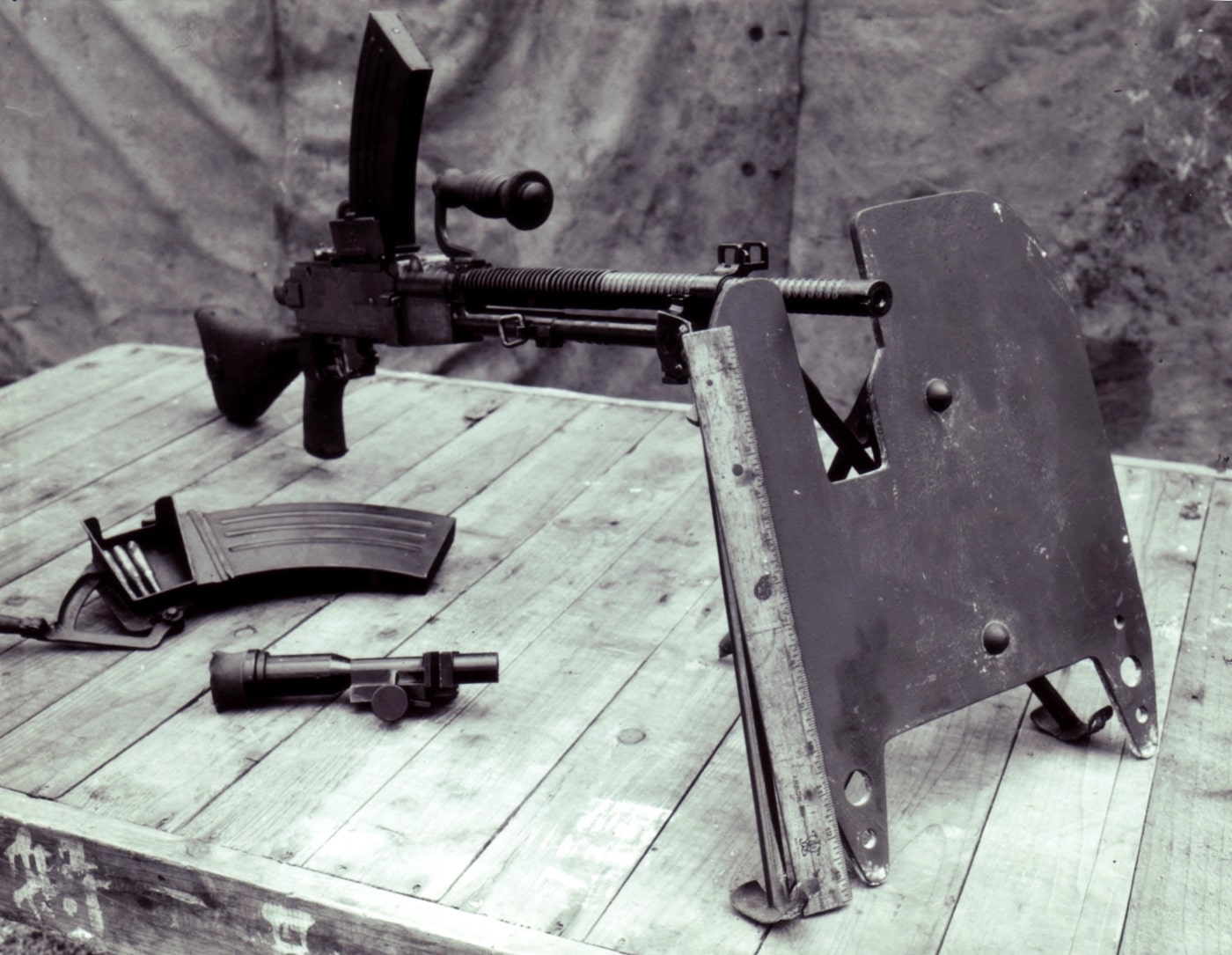
Armored shields: “A number of Jap portable armored shields were found on Kolombangara Island and New Georgia. These shields are all about one-fourth inch thick and it was first thought that they were carried by machine gunners as defense armor. Recently, however, many have been found in the gun ports of pillboxes, indicating that this is their major use. These shields will withstand hand grenades and ordinary .30 caliber ammunition. Armor piercing .30 caliber penetrates them without trouble.” Report, Pacific.
“The Jap heavy machine gun is slow firing and is not as good as our heavy gun. Nor is their light machine gun as good as our light one. At 3° or 40 yards their light machine gun shoots a pattern the size of a big wastebasket. It has a high cyclic rate and sounds much like our Thompson submachine gun.” Maj Gen Robert L. Spragins, Guadalcanal.
After taking the island of Saipan, the 4th USMC Division Operational Report provided these details on the Japanese LMGs they encountered:
Difficult to spot: Jap ammunition is smokeless and generally the flash is concealed. The only detection as to location of weapons is for the most part by sound.
Potent weapons: The Nambu MG is an excellent weapon, extremely accurate with a high capacity for sustained rapid fire. The heavy MG has the same qualifications.
Telescopic sights: Many Jap MGs were equipped with telescopic sights. Fields of fire for Jap automatic weapons are narrow, limited and well defined. There were no indications of pre-selection of alternate fields of fire by Jap machine gunners. Primarily, fields of fire are good and usually sighted to cover routes of approach.
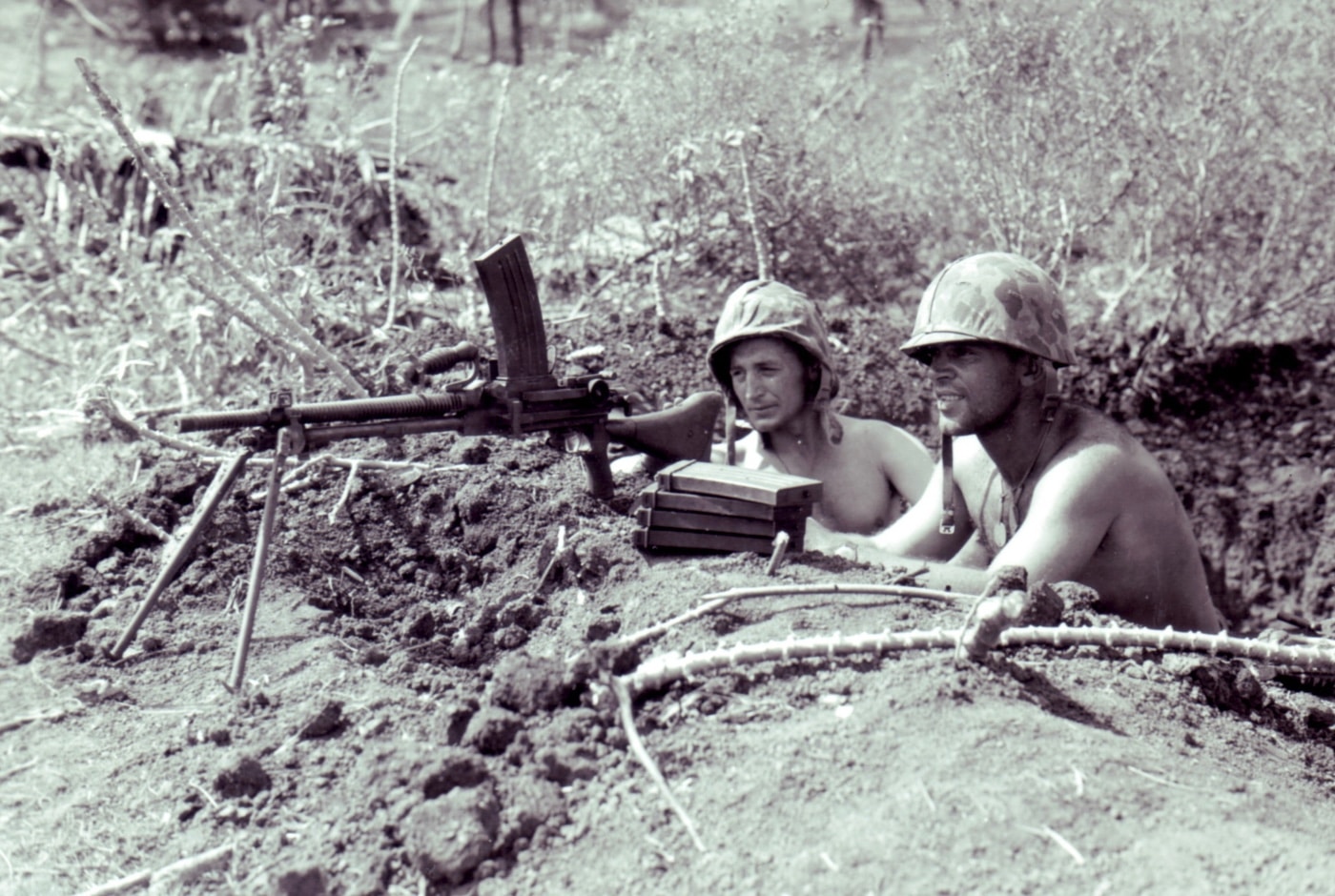
Firing low: The fire is generally directed about 18 inches above the ground. Only one or two cases are known where Jap MGs were employed to deliver interlocking bands of fire. It appeared that Jap MGs were never employed in mutual support of each other.
Lt. Colonel John George concluded his praise of the Japanese “Nambu Lights” with this admission: “It is that my knowledge of the capabilities of the Nambu Light Machine Guns caused me the greatest and most demoralizing fear I have known in all the combat I have seen. It was one thing to be shot; it was another to be shot with a Nambu Light. In the first case, you had a chance of un-maimed survival, but in the second, you had practically none.”
Conclusion
Japanese light machine guns, although incapable of turning the inevitable tide of the war in the favor of Japan, nonetheless were highly capable and effective weapons our troops were forced to face.
Editor’s Note: Please be sure to check out The Armory Life Forum, where you can comment about our daily articles, as well as just talk guns and gear. Click the “Go To Forum Thread” link below to jump in and discuss this article and much more!
Join the Discussion
Read the full article here

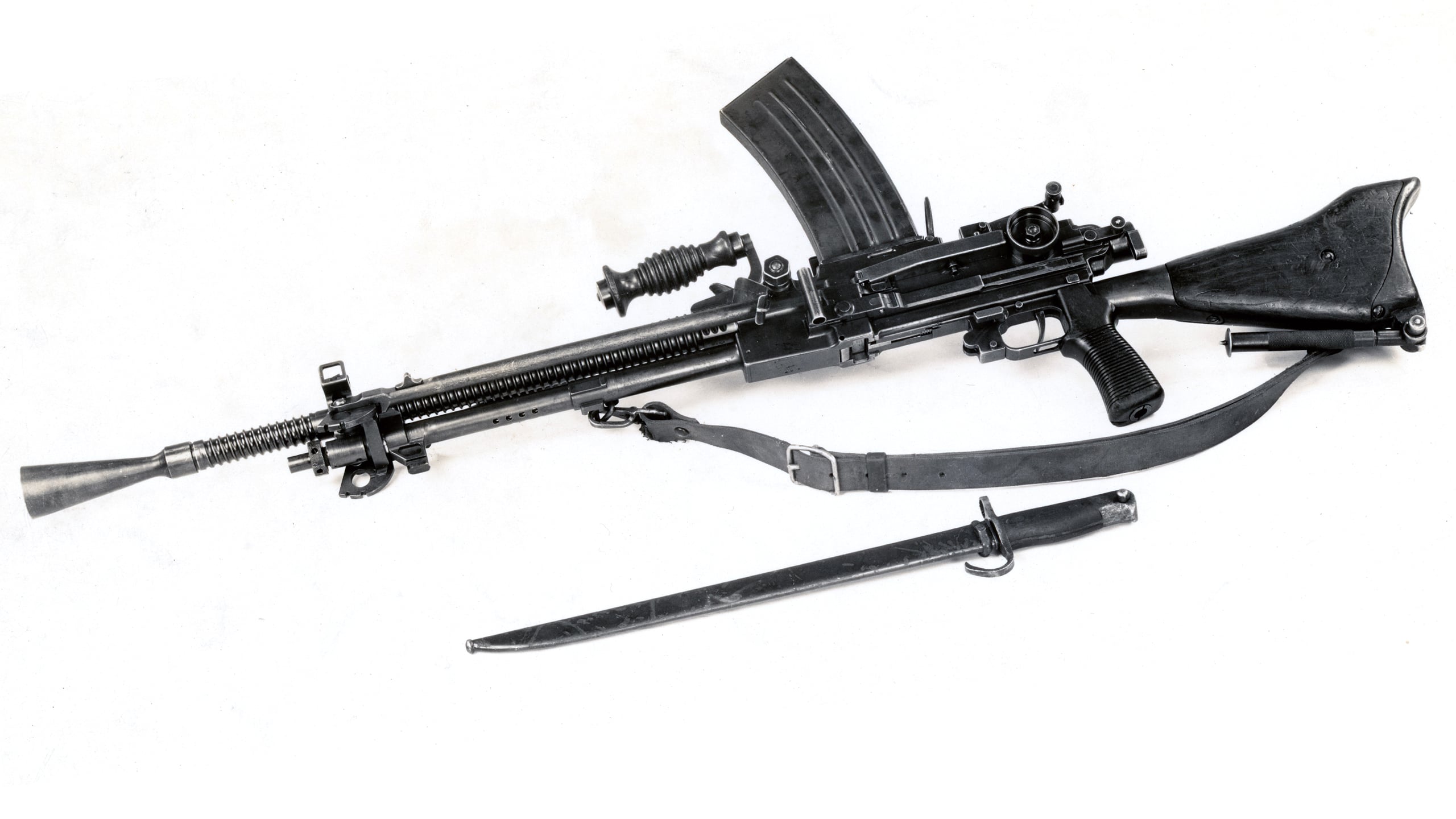
![Glock Gen 6: The Next Evolution Of Perfection [FIRST LOOK] Glock Gen 6: The Next Evolution Of Perfection [FIRST LOOK]](https://gundigest.com/wp-content/uploads/glock-gen-6.jpg)

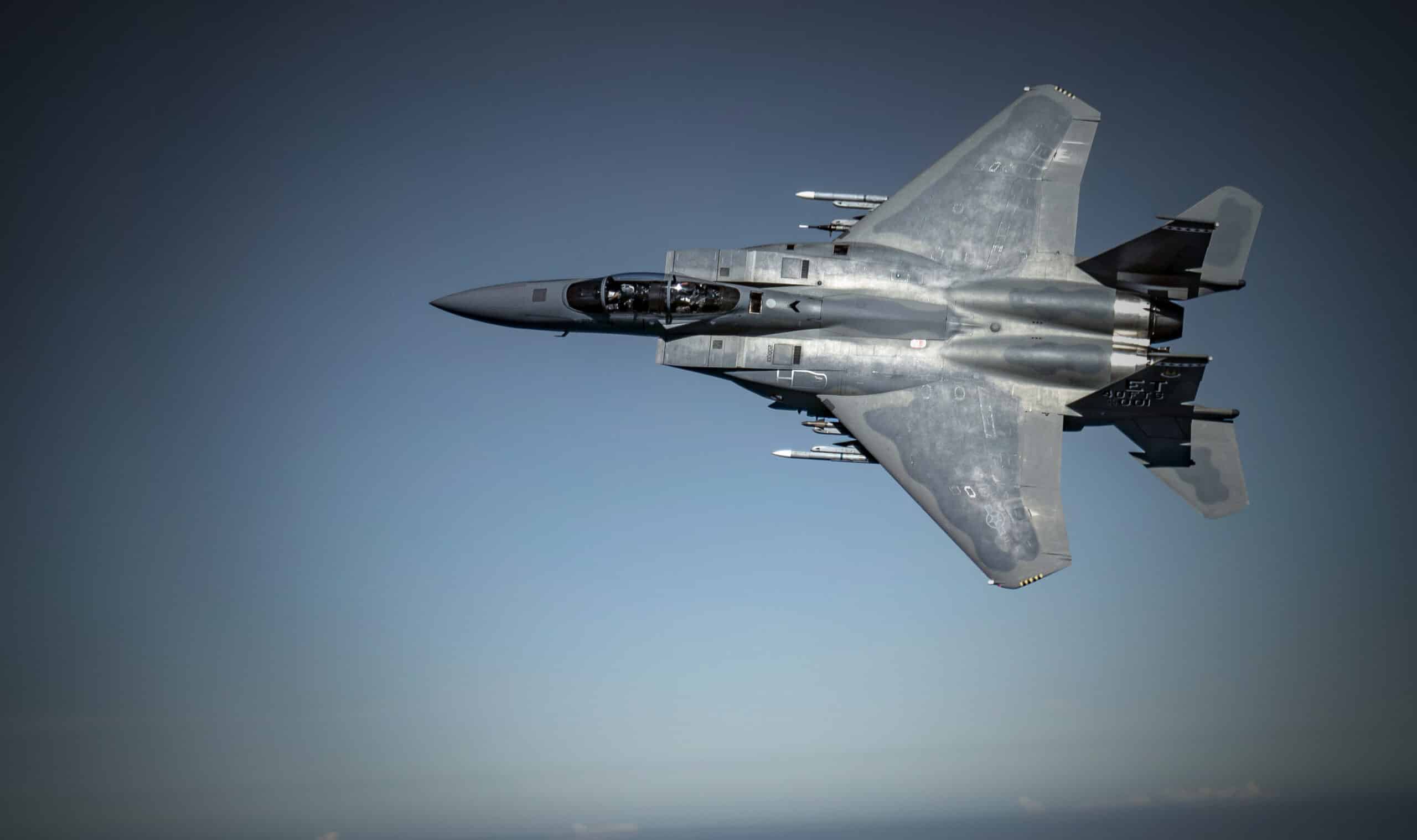
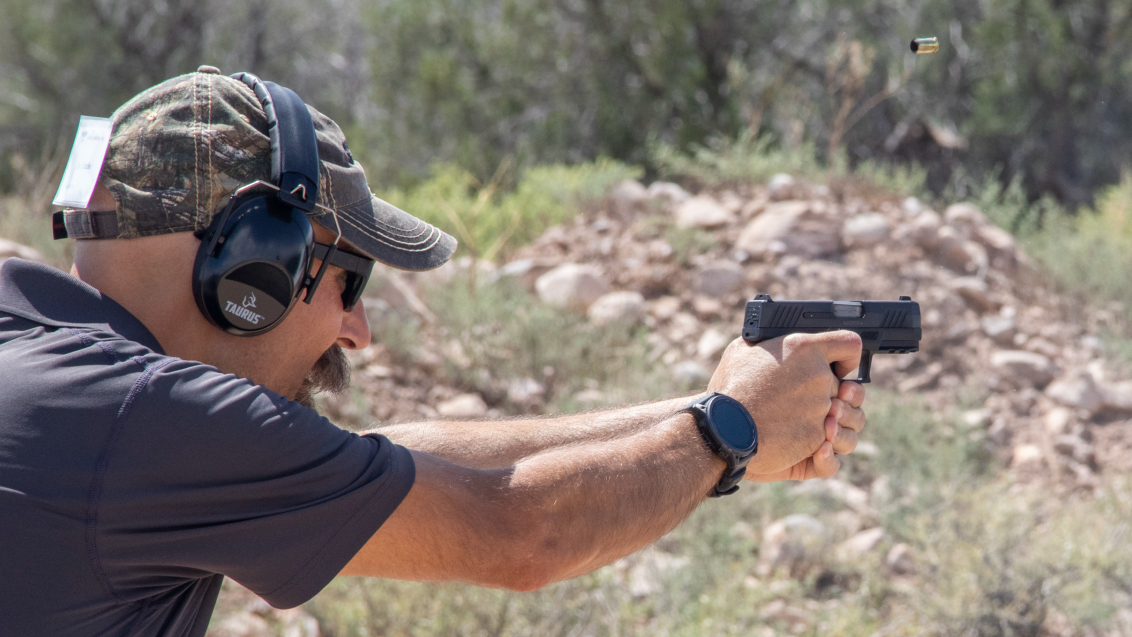

Leave a Reply